Life To Art
The possibilities of Fluid Art with an Environmental Twist, by Angela Webster, Elizabeth Solich, 5 April 2020, Adelaide
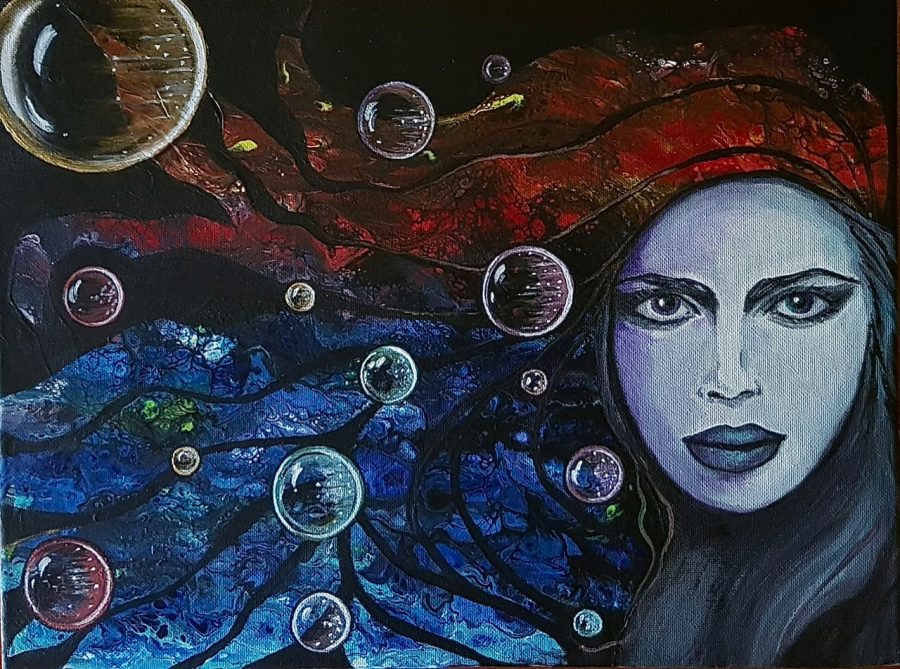
The possibilities of Fluid Art are endless which is why this technique is so very exciting and inspiring.
Fluid Art, also known as Paint pouring, is a form of abstract art that uses acrylic paints of a runny (fluid) consistency that can be applied to a variety of surfaces in many different ways such as, pouring, dripping, swirling, glazing, dipping, blowing and swiping.
Different tools can also be utilised to manipulate the paint and different pouring mediums incorporated into the paint will also vary the results.
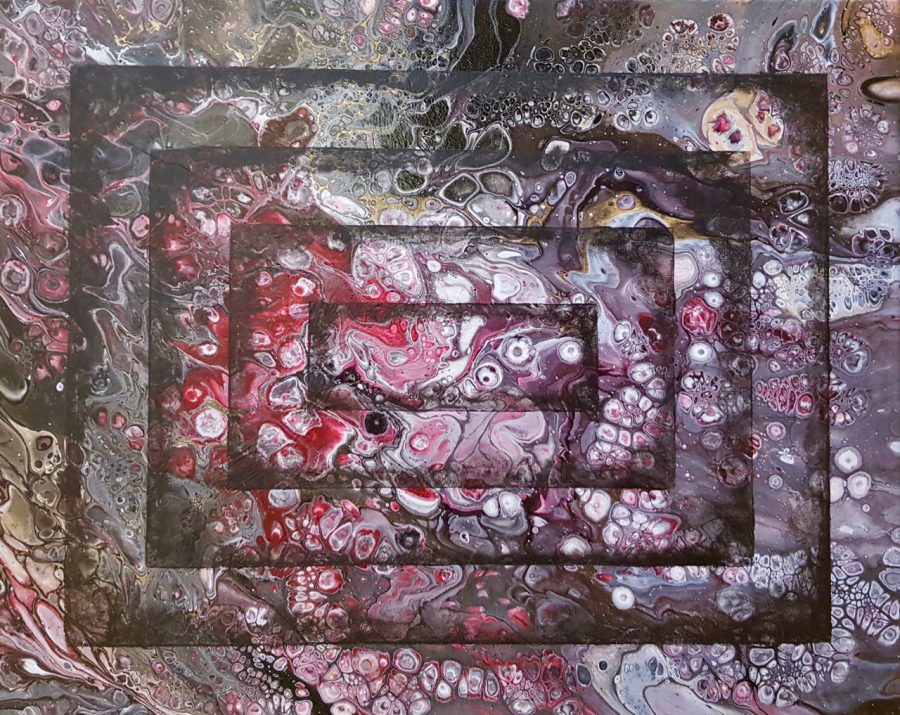
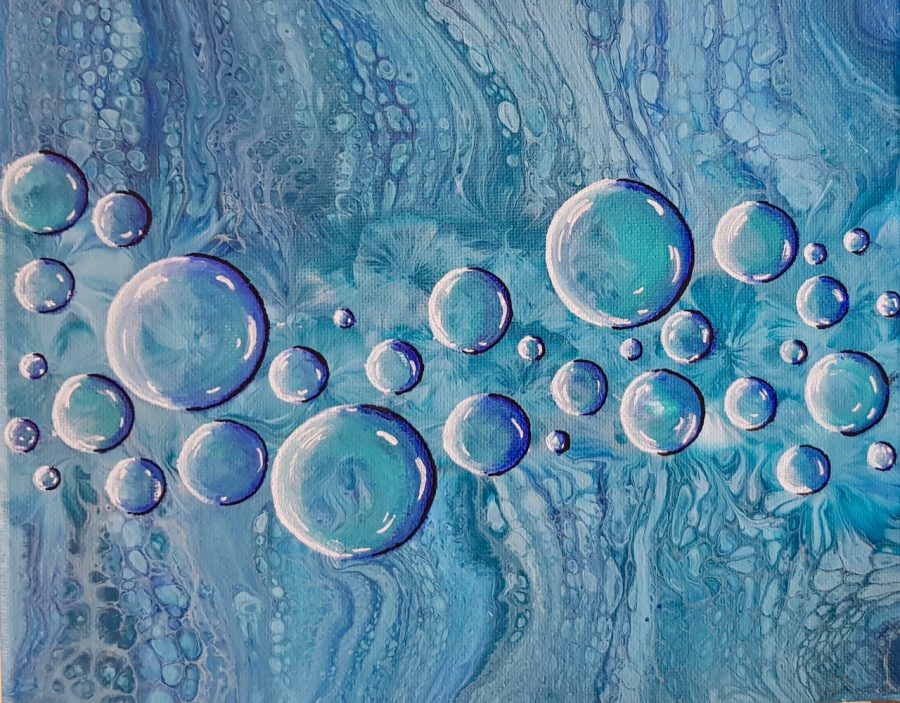
This painting style provides such versatility for the artist to create unique, stand-alone pieces (no two pours are ever the same!) or used as backgrounds for compositions. The preparation of acrylic paint to make it fluid in the creation process, involves a level of pre planning to consider the desired viscosity/fluidity of the paint, the type of pouring medium and paint; PM ratios. Paint density (particularly heavy pigmented paints) may require different paint / PM ratios. The interplay of colours for each technique is so a major consideration, depending on the desired result. Once the paint is prepared and the technique applied – the rest is ‘wait and see what happens’ because you never know with this style of painting. Quite often the best laid plans will have a very different outcome to the expectation. That’s why it’s so much fun !
Adelaide based artist and photographer, Elizabeth Solich, has been honing her skills in underwater photography for the past seven years. Originally an architecture student, Elizabeth blended her photography skills and underwater observations of the fauna and flora with her drawing and painting experience, bringing about a perfect marriage of her two passions.

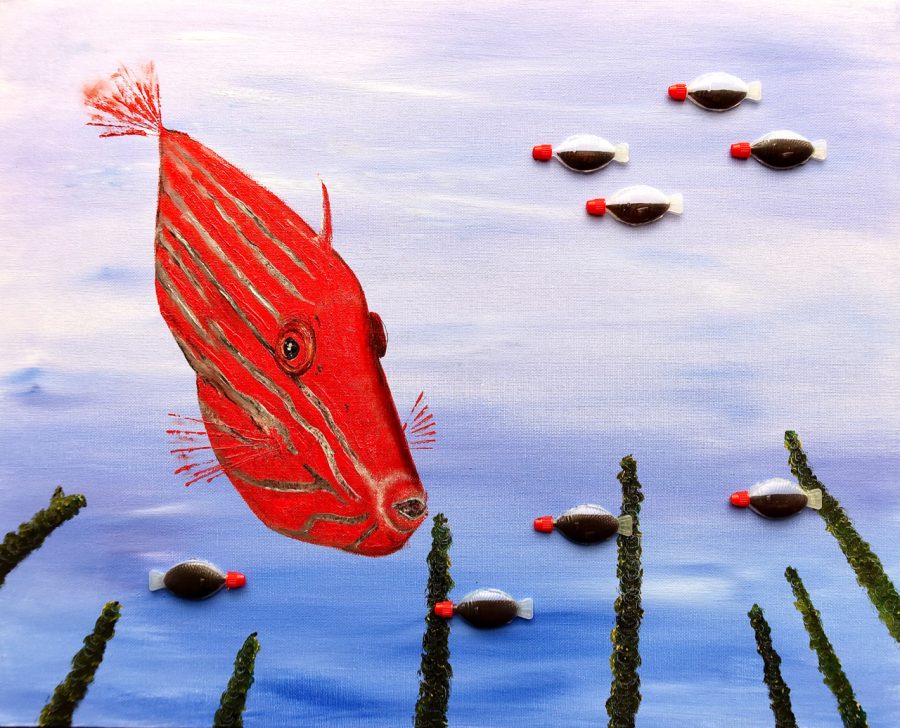
Elizabeth’s evolution into underwater photography allowed her to introduce another element to this union and extend the range of her talent even further. Her observations of marine fauna and flora allows Elizabeth to challenge boundaries, capturing the underwater world utilising environmentally aware story telling in the exploration of movement and composition.
Through a mutual love of photography, the natural world and the diverse sea and landscapes, Angela and Elizabeth have combined their unique styles and selective mediums to collaborate on a number of projects that encapsulate their artistic passions. When acrylic background is finished, it gets a solid satin varnish, and then Elizabeth would paint a very fast loose line drawing, then fill with values. The edges get adjusted as Elizabeth moves through the painting. When oil paint dries, the final, environmental message carrying item/s get finely glued on, to finish the artwork. Then the artwork receives a glossy or mat varnish for better separation from the background.
The painting of the Pyjama Squid is a mindful response to The Guardian’s article regarding CSIRO scientists discovered the micro plastic pieces while analysing samples taken hundreds of kilometres offshore at the bottom of the Great Australian Bight, a so-called “pristine” biodiversity hotspot and marine treasure.

Oil painting by Elizabeth Solich on fluid acrylic pour & string pull technique background by Angela Webster, on canvas, selective varnish.
The very same technique was used for the painting of the Leafy Seadragon, titled “Escaping The Paparazzi” where Solich captured in oil two Leafy Seadragons on a background using a fluid acrylic pour technique provided by Webster. The artwork encapsulates a plausible theory that underwater photographers could be to blame for driving the elusive animal further offshore by disturbing their habitat. Each of these artwork is an environmental statement addressing the vulnerability of our precious oceanic ecosystems. With the use of a recycled plastic products, this talented artists makes us vigilant about the potential hazards for the vibrant underwater habitat that is bursting with life.
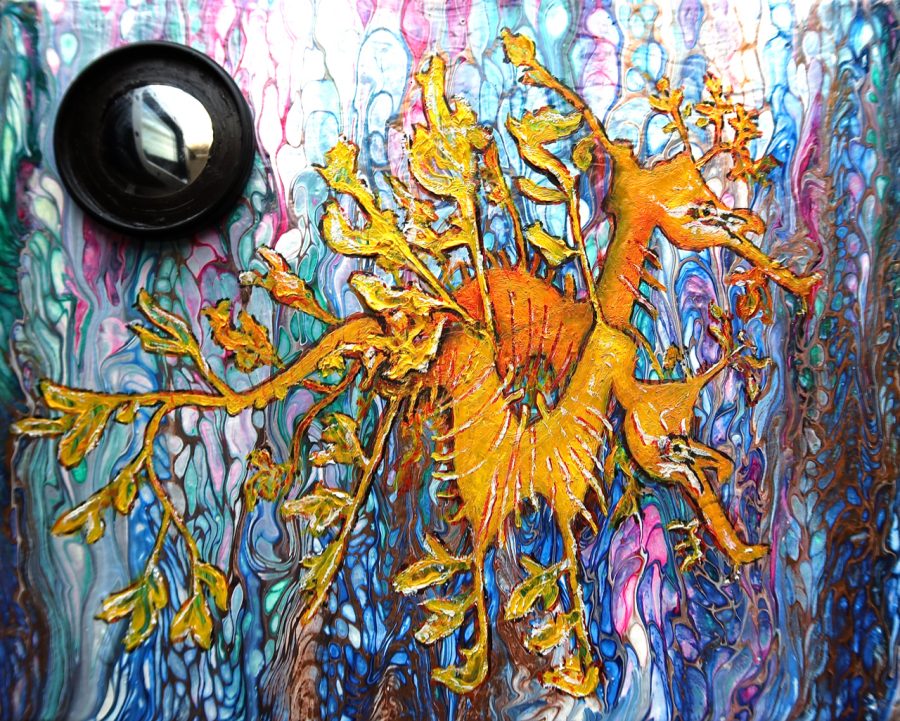
Oil painting by Elizabeth Solich on fluid acrylic pour & string pull technique background by Angela Webster, on canvas, selective varnish.
Susie said “I bought the painting of the pyjama squid because, as an artist and a diver, I love the humorous take on the underwater world that Elizabeth depicts. Elizabeth is great with shape, colour and texture and adding the found objects into the painting is both humorous and an environmental statement. All of her works have their own character and for me, they jump off the page and become part of the family.
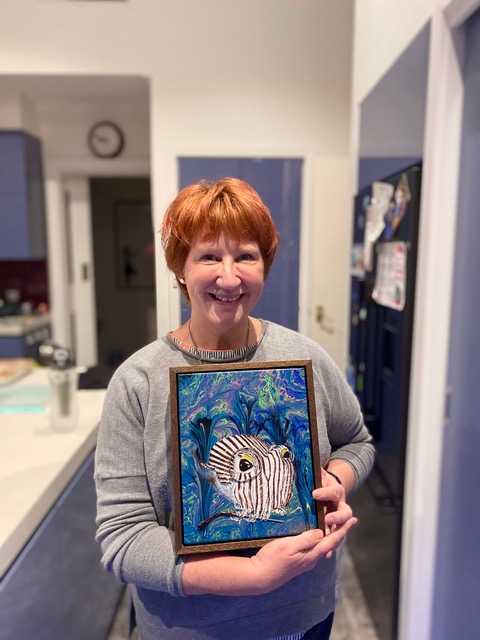
The marriage of Elizabeth with Angelas work is stunning. The graceful volatility of the acrylic is a perfect interpretation of water under the surface, of the movement and the colours as the sunlight bends through the shifting water is clearly visible in Angelas work. I love this pairing and can see many more works together in the future” says Susie.
The Possibilities of Fluid Art with an Environmental Twist, by Angela Webster, Elizabeth Solich, 5 April 2020, Adelaide
